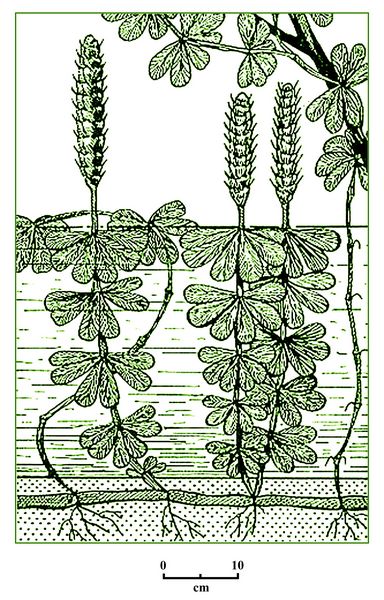Athena Review Image Archive ™
Paracalamitina striata

Paracalamitina striata (after Taylor et al.2009).
Paracalamitina striata was a relatively small, fern-like plant up to 70 cm high which grew along lagoon banks and lake shores in the Ural region of Russia during the end of the Early Permian (Late Kungurian and Ufimian stages). It is classified in the division Equisetophyta, which includes plants commonly called horsetails and scouring rushes.
Equisetum, the only living genus in this division, is descended evolutionarily from tree-sized fossil plants. Equisetidae is one of the four subclasses of Polypodiopsida (ferns), a group of vascular plants with a fossil record going back to the Devonian. Horsetails typically grow in wet areas such as lagoon banks and lake shores, with whorls of needle-like branches radiating at regular intervals from a single vertical stem (Talor et al. 2009).
Paracalamitina striata has
also been found in Permian formations in Angaraland, the name given by
the Austrian geologist Eduard Suess (1831–1914) to a small shield in
north-central Siberia, where Precambrian rocks are exposed, and which
was considered to be the nucleus for later structural features in Asia
(Naugolnykh 2002).
References:
Naugolnykh, Serge V. 2002 Paracalamitina striata - A Newly Reconstrtucted Equisetophyte from the Permian of Angaraland. Journal of Paleontology 76(2), 377-385.
Taylor, Edith L., Thomas N. Taylor, and Michael Krings 2009. Paleobotany: The Biology and Evolution of Fossil Plants. Academic Press.
.
Copyright © 1996-2020 Rust Family Foundation (All Rights Reserved).